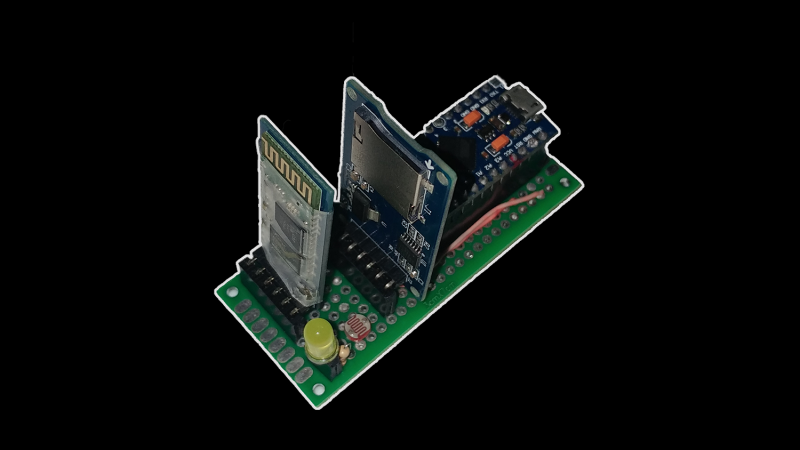[Amirreza Nasiri] sends in this cool USB keystroke injector.
The device consists of an Arduino, a Bluetooth module, and an SD card. When it’s plugged into the target computer the device loads the selected payload from the SD card, compromising the system. Then it does its unique trick which is to switch the injector over to Bluetooth mode. Now the attacker has much more control, albeit local, over the system.
While we would never even be tempted to plug this device into a real computer, we like some of the additional features, like how an added dip switch can be used to select from up to eight different payloads depending on the required attack. The addition of a photo diode is also interesting, and makes us dream of all sorts of impractical movie hacker scenarios. [Amirreza] says it’s to trigger when the person leaves the room and turns the lights off.
[Amirreza] has all the code and design files on the GitHub. There are also a few payload examples, which should be fun to hack on. After all, one of life’s pleasures is to find new ways to mess with your friends.















That’s an LDR not a photodiode. Not available in Europe due to the cadmium in a cadmium sulfide cell. That being said is does a good job of detecting darkness.
Aliexpress, ebay (and I’m sure more specialized companies) do ship LDR’s to europe, so what’s the problem?
It is no problem to get some from Conrad Electronic or Segor Electronic in Germany.
Bs. Dont spread misinformation. Normally available through the regular channels here in the netherlands, europe. Check rs-online or farnell or for example opencircuit.nl. no problem at all
It is not misinformation. A CdSe/CdS cell is not RoHS compliant. Doesn’t mean you can’t buy it.
Yeah, “LDR” detecting darkness and then activating the device.
Nice in theory, but if you look at design, it is poorly positioned.
There is two boards sticking out from the “mother board” which don’t really make for slim design.
Maybe this is a prototype but I think the idea is poorly demonstrated how it is.
I would go for putting the two “daughter boards” via 90 degree pins so they are in line with the “mother board”.
That would make for a slimmer package and less obvious.
“maybe this is a prototype”
It’s a project not a product…
So this may be filed under prototype.
If you look more closely you’ll notice that it’s made from perfboard with standard modules.
That’s how you make a prototype.
Regarding detecting lights on or off… it’s more like detecting day or night. The position of the LDR being in the sahed of the modules is a pint, but not a big one. If you want to hide this module from sight, it must be under the desk, so it will never be in direct light from the lamps in the room. Though technically you can detect differences in light intensity, I will be difficult to be sensitive enough for a reliable light on or off detecting during the day.
Though I wonder, if a person bothers to turn lights, but doesn’t turn of the computer (or somehow lock it), what kind of person is that?
Regarding the project, it’s fun, lot’s of challenges, but regarding it’s use (as in primary function)… I would say that this is highly questionable.
Lots of these project won’t go beyond this. It is already a step beyond the usual wire mess on a breadboard.
If it is working and actually useful, then chances are that it could work as is for years.
I have lots of projects that I had future expansion plans for, but don’t want to take offline to much with.
Awesome !
Does the mess with your friends approach works this kind of situation: https://bit.ly/2YbMyNk ?
$20 or less gets you a LORA ESP32 module, that is the entire solution in one piece and with a lot more range.